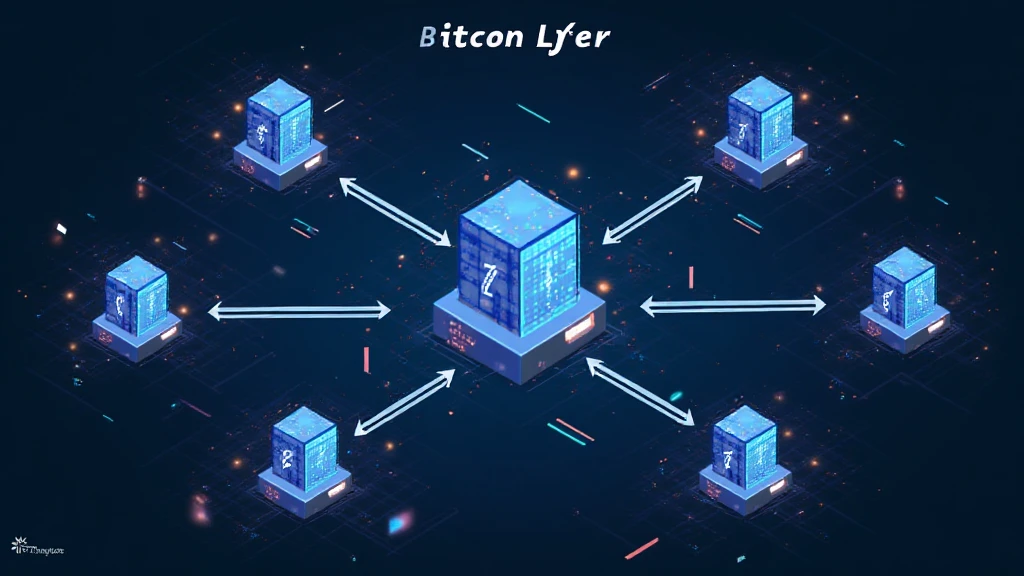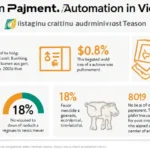Introduction
\n
As the crypto landscape continues to evolve, there’s an increasing urgency to address scalability and transaction speed concerns. With over $4.1 billion lost to DeFi hacks in 2024, the demand for effective security measures and efficient transaction solutions has never been more critical. Enter the Bitcoin Layer technology – a pivotal development aimed at fortifying the foundation of digital transactions.
\n
This article delves into what Bitcoin Layer technology entails, its advantages for users, and how it represents a significant stride in the world of decentralized finance. Moreover, as Vietnam emerges as a noteworthy player in the crypto market – boasting a growth rate of 320% among crypto users from 2021 to 2023 – understanding these advancements in the Bitcoin ecosystem becomes essential for both investors and enthusiasts alike.
\n
\n
Understanding the Bitcoin Layer
\n
The Bitcoin Layer refers to the mechanisms and innovations designed to improve the scalability and efficiency of Bitcoin transactions without compromising the security that the network is renowned for. Think of Bitcoin Layer as a robust infrastructure akin to a multi-lane highway that allows a higher volume of traffic to flow smoothly without bottlenecks. This system not only enhances transaction speeds but also lowers fees, making it a more viable alternative for everyday transactions.
 \n
\n
- \n
- Layer 1 Solutions: These involve direct changes to the Bitcoin protocol aimed at increasing capacity.
- Layer 2 Solutions: Technologies like the Lightning Network, which facilitate faster transactions by allowing off-chain processing.
- Smart Contracts: Automating transactions and agreements directly on the chain, enhancing efficiency.
\n
\n
\n
\n
\n
Layer 1 vs. Layer 2 Solutions
\n
As you explore Bitcoin Layer solutions, it’s essential to distinguish between Layer 1 and Layer 2 approaches:
\n
- \n
- Layer 1 Solutions: Direct modifications to Bitcoin’s code, such as Segregated Witness (SegWit), which helps improve transaction capacity at the base layer.
- Layer 2 Solutions: Involves secondary protocols built on top of Bitcoin’s blockchain. The most prominent example is the Lightning Network, designed to handle faster transactions through off-chain settlements.
\n
\n
\n
This differentiation helps potential users choose the right solutions tailored to their transactional needs.
\n
\n
Advantages of Bitcoin Layer Technology
\n
Adopting Bitcoin Layer solutions comes with several advantages:
\n
- \n
- Increased Scalability: Bitcoin Layer solutions significantly enhance the number of transactions that can be processed, thus meeting growing user demands.
- Lower Transaction Fees: By optimizing processes, such solutions can reduce costs associated with transactions, making Bitcoin more accessible.
- Enhanced Security: Innovations often fortify the security framework, ensuring that transactions remain safe from vulnerabilities.
- Interoperability: Facilitates better integration with other blockchain platforms and services.
\n
\n
\n
\n
\n
\n
Real-World Applications
\n
Transforming the theoretical into practical use – let’s examine some real-world scenarios:
\n
- \n
- **Microtransactions:** Users can engage in low-cost transactions without the fear of high fees.
- **Cross-Border Payments:** Bitcoin Layer facilitates seamless remittances, especially vital in regions with underbanked populations, such as in parts of Vietnam.
\n
\n
\n
For context, here’s a table illustrating the adoption rate for Bitcoin Layer solutions in Vietnam:
\n\n\n\n\n\n
| Year | User Growth Rate (%) | Transaction Volume (in billions) |
|---|---|---|
| 2021 | 50 | 1.5 |
| 2022 | 150 | 3.5 |
| 2023 | 320 | 5.0 |
\n
Source: Vietnam Blockchain Association
\n
\n
Challenges & Concerns
\n
While Bitcoin Layer solutions boast numerous benefits, they are not without their challenges:
\n
- \n
- Adoption Speeds: Educating users about new technologies can take time.
- Security Risks: Simplified transaction processes can create vulnerabilities, particularly at layer 2.
- Regulatory Compliance: Navigating the evolving legal landscape poses challenges to implementing these solutions effectively.
\n
\n
\n
\n
\n
Conclusion: The Future of Bitcoin Transactions
\n
As we move towards an increasingly digital world, the innovations brought by Bitcoin Layer technologies will be crucial in shaping transaction processes. For countries like Vietnam, which are rapidly embracing digital currencies, these advancements can lead to greater financial inclusion and efficiency.
\n
Nonetheless, while exploring the potential of Bitcoin Layer solutions, it’s vital to remain informed about the risks and evolving regulatory landscape. By staying educated, users can leverage these new tools to enhance their digital financial experiences.
\n
In conclusion, incorporating Bitcoin Layer technology will not only improve the speed and security of transactions but also solidify Bitcoin’s position as a leading cryptocurrency. Consider this a stepping stone, as the journey is just beginning in the vast decarbonized financial ecosystem.
\n
\n
For more on crypto-related topics, including guidance on crypto taxes in Vietnam, explore our insights at HIBT.
\n
\n
**Author**: Dr. Alex Tran, a blockchain technology researcher with over 15 published papers in blockchain scalability. He has led numerous smart contract audits for well-known projects, making him a seasoned voice in the sector.




